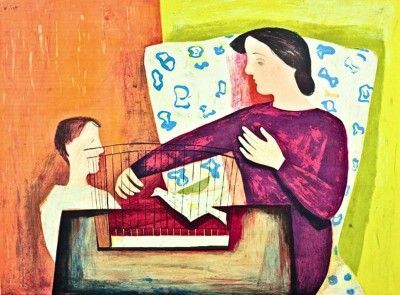
Lyons Print: William Scott — The Bird Cage.
The war had not only hit at Britain’s cities with bombs, but also at the people with rationing. Food and fabric, paper and paint, tea and sugar were all rationed.
It was in the war years that the Lyons teashops became shabby and as fashions started to change in the post war era they looked dated. Materials like wood and paint where mostly reserved and rationed for government use in the post war construction, so another idea had to be devised to make the Lyons tearooms look more respectable.
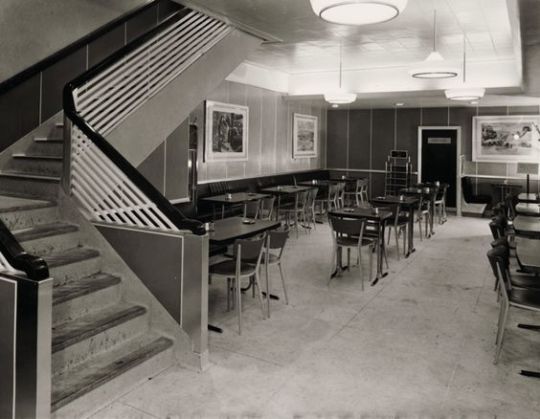
Lyons Teahouse. 1951 The 2nd series of lithographs on the walls.
The directors, Felix and Julian Salmon had the idea of refreshing the tearooms with lithographic pictures to make them more appealing. In 1947 they sort advice from Jack Beddington who was the Artistic Director of Shell-Mex.
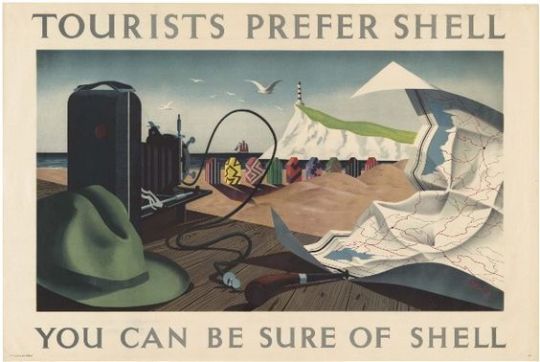
Shell Advert by Tristram Hillier — White Cliffs of Dover
The advertising in the 1930’s for Shell-Mex featured British artists modern work with simple text. It had been a public success and an exhibition of the Shell-Mex lithographs in 1939 was well attended.
The art of advertising in London from the mid 1920’s onward had seen modern art projected onto the public with company’s like Shell-Mex & London Transport using artists like Paul Nash, Edward McKnight Kauffer, Horace Taylor and Graham Sutherland to illustrate bold and simple posters.
It was an age when galleries charged admission and in the war years galleries where disbanding and hiding their art collections safe from German bombing raids. This would mean that the colour advertising posters where some of the few artworks to be left open to the public in wartime and where displayed all over the country. It would be the first time the public would encounter these artists.
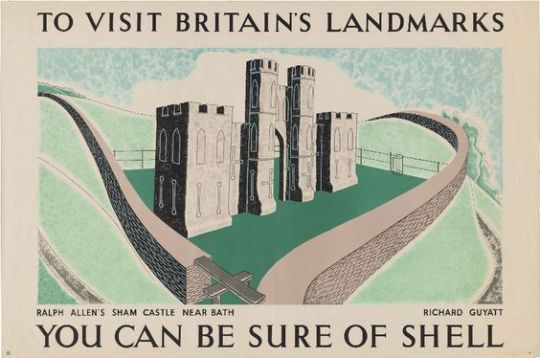
Shell Advert by Richard Guyatt — Ralph Allen’s Sham Caster nr Bath.
By appointing Beddinton they relied on his contacts with artists to product the lithographs. Samples and designs where commissioned and the first series of these sixteen prints featured Edward Ardizzone, Edward Bawden, Clifford & Rosemary Ellis, Barnett Freedman (who assisted with artistic advice on lithography) Duncan Grant, Edwin La Dell, John Nash to name half. Artists also claimed royalties on copies sold in the tearooms, an unusual practice in it’s day. One thousand five hundred prints where made of each poster in the first series.
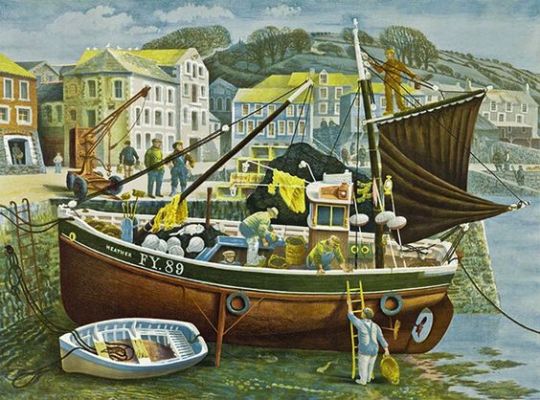
Lyons Print: David Gentleman — Cornish Pilchard Boat
Some of the troubles in printing came from printing trade unions and of artists unfamiliar with the lithography process. Some of these posters had to be hand drawn onto the lithographic plate to be printed, pre-made works where translated from paintings by Chromoworks Ltd, London.
The artworks for Lyons had a press release in 1947 at the Trocadero Restaurant, London, where Lyons often had their board meetings.
A special preview was arranged for Queen Mary.
Many prints where glued to wood or mirrors for hanging in the tearooms, the public could then buy the posters un-mounted and unframed, it’s the prints unglued to canvas and board that are worth more money today.
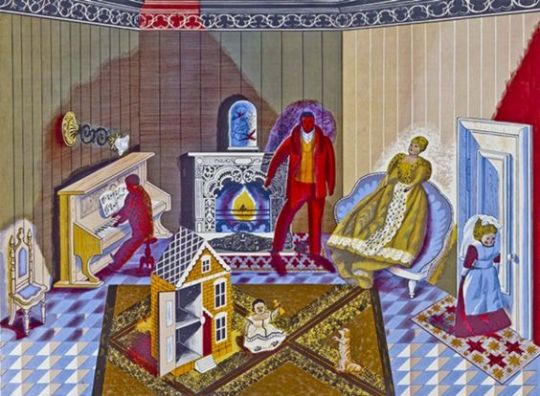
Edward Bawden — The Dolls at Home.
Thirty of the Lyon’s Tea Rooms in London exhibited the prints at first. Due to the press and public interest the prints were soon found in all Lyons’ teashops. The success of the first series of prints meant that a second and third series of prints came in 1951 and 1955.
It is worth noting that companies like Guinness started to produce lithographic prints (The World Record Series) to brighten up their pubs soon after. So the series and it’s publicity had an ongoing effect.
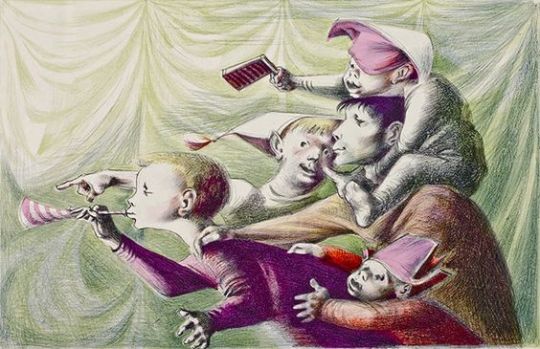
Michael Ayrton — The Spectators
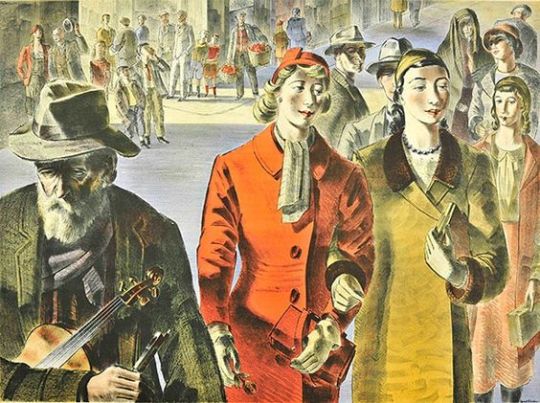
Barnett Freedman — People